Looking for a ALB Accumulator for a 91/92. Mine is gone and it looks like they are not available new anymore. Part number:
57060-SL0-A00
57060-SL0-A00
***AVOID MARKETPLACE SCAMS!!***
Scammers are using compromised Prime member accounts to pose as a trusted seller in the marketplace. Before you enter into a deal with any seller, follow these tips to keep yourself safe. If you encounter one of these scammers, please report them immediately and we will lock their account.
Caveat Emptor!
| 57070-SG0-801 |
Careful, AcuraPartsWarehouse (and many of the Honda/Acura OEM parts outlets) will say they have a part but they really don't. If Amayama says THEY don't have it then its unlikely anyone stateside actually has it.I managed to find one at Acura Parts Warehouse. But its very expensive. I was hoping to find one used in working order. I think a number of folks have switched to the 2000+ system. So hoping there are some accumulators out there.
Good to know thanksCareful, AcuraPartsWarehouse (and many of the Honda/Acura OEM parts outlets) will say they have a part but they really don't. If Amayama says THEY don't have it then its unlikely anyone stateside actually has it.
Thanks John I will let you know. I have a couple of other inquiries i am waiting for answers onI know you are looking just for accumulator, but I have this freshly removed
Brakes - 1993 Complete ABS unit
1993 Complete ABS unit Upgraded to a 00+ model. 182k mileage when removed. ABS worked well and the only time the unit would make noise would be after long periods without being driven, which would disappear after first brake cycle. Included are the original abs computer and the brake lines if...www.nsxprime.com
Willing to negotiate slightly
Are you referring to jumping the accumulator connector? I have done that temporarily to turn off the light and stop the pump from grinding away. Long term though I want to have the abs working.Legends (KA5?) have the same part and are junked regularly.
It is a pressurized part, so shipping outside of CONUS will be quite expensive.
As with anything ALB related: I recommend a graceful bypass which takes 5 minutes.
I attempted to flush the fluid. There was no pressure in the system. Then we exercised each solenoid. No foam or debris in the reservoir after exercising the solenoids. When I start the car and get up to the 10mph trigger for the pump it will run the full 120 seconds. The system is not leaking at all. I am thinking something is stuck open. I have the rebuild kit for the ALB. I want to keep the original ALB working as long as I can so, I figure having an extra accumulator is not a bad thing. For now, I have jumped the accumulator, so the pump does not come on. I am going to try cleaning and lubing the ALB modulator when I replace the O-rings from the kit. From what I have read thus far though I think the problem maybe the pump. It never gets any pressure in the system.>and stop the pump from grinding away.
This is a symptom of the system not getting up to pressure, generally caused by a bad pump or other internal leak.
The 120-second pump time-out is generally not a symptom of a bad accumulator. A bad accumulator is generally an immediate stop to the pumping without a functional ALB (ABS).
What was the diagnosis process/tree?
Thanks for the detailed info!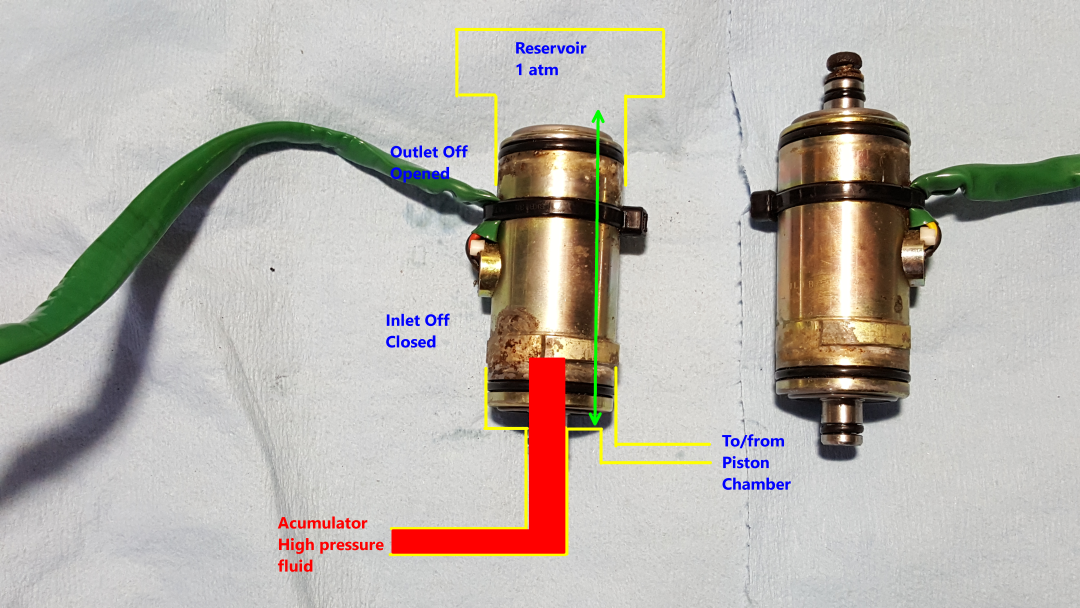
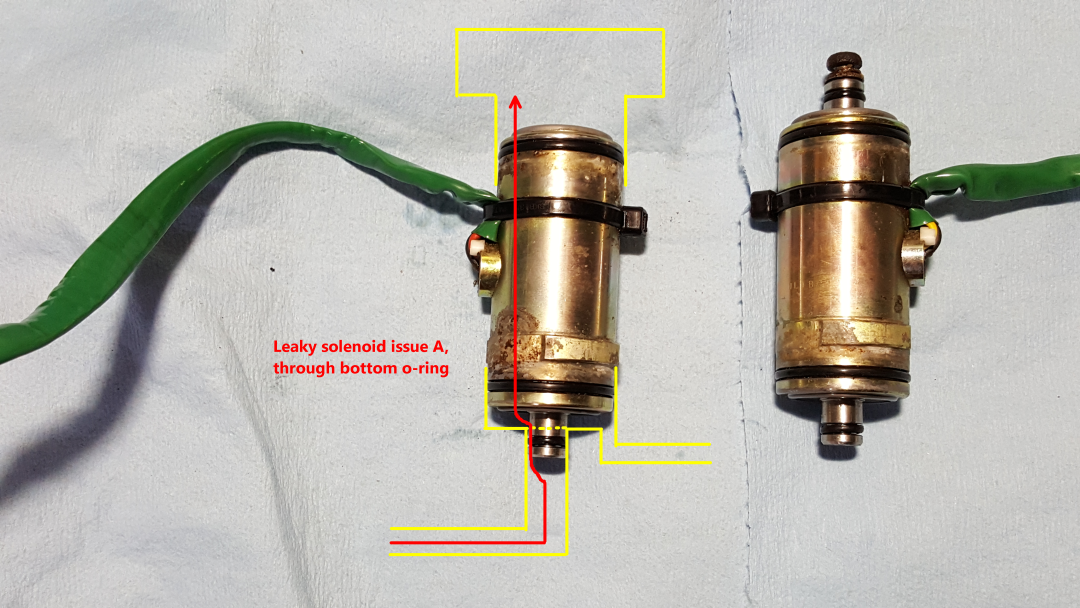
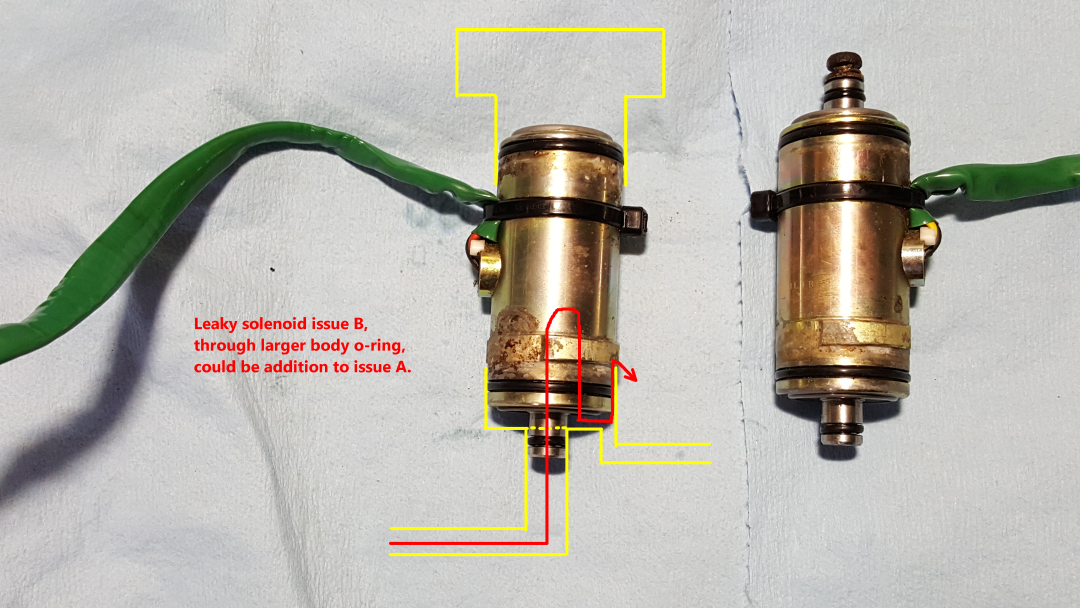
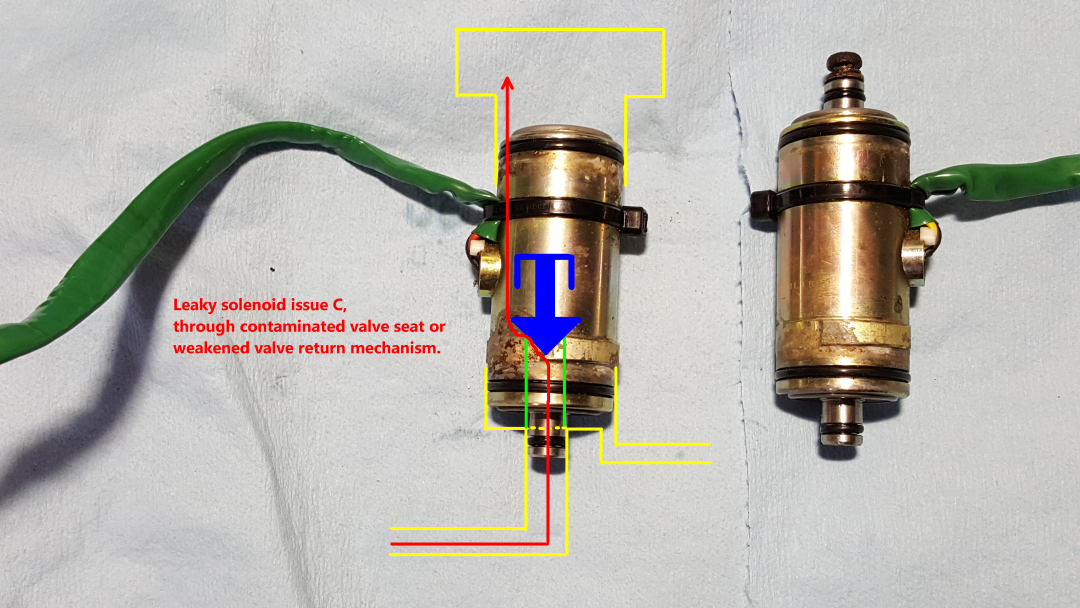
If you manually activated the pump and the fluid level didn’t drop at all, you have punctured accumulator or pump issue.
With the leaky solenoid issue A, B, C as above, if your pump/accumulator were both healthy, then you should see something at the reservoir (bubble or foam) or notice the external leakage while pressuring the system.
The overhaul o-ring kit would improve for the case A & B but not for C as it’s inside the solenoid assy.
Above photos are for the early model 1st gen ABS.
Later, the 2nd gen was still using the same concept but solenoids were packaged better against leaky issue.
Still experienced the same issue though.
It was only fixed when the Bosch style one body ABS modulator was introduced much later.
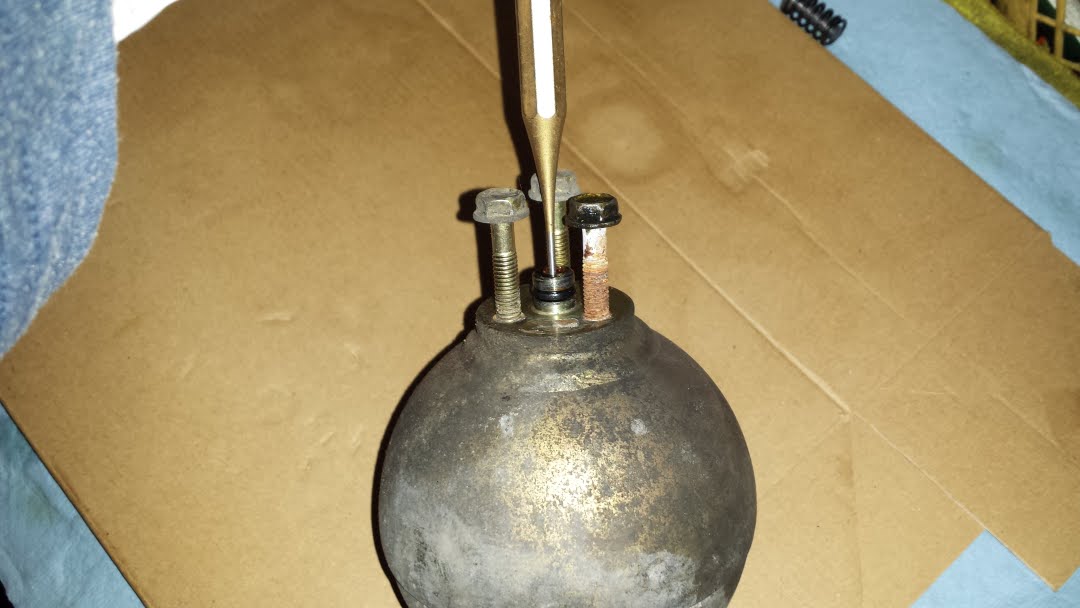
If doing the overhaul, you'll be forced to release any remaining high pressure so good time for testing the accumulator.
Get the spare o-ring for the accumulator and place narrow centre punch or allen key at the opening.
With the healthy one, you should hit the end stop close to the opening.
With this one, it was like around 25mm from the top.
If the bladder punctured, the centre punch will go all the way down and bottom out.
No nitrogen gas left creating the back pressure so no pressurised fluid left in the accumulator.
Thus, at 120sec after first exceeding 6mph, it would trigger the ABS light and disable the ABS.
This should confirm whether you can re-use the accumulator or not.
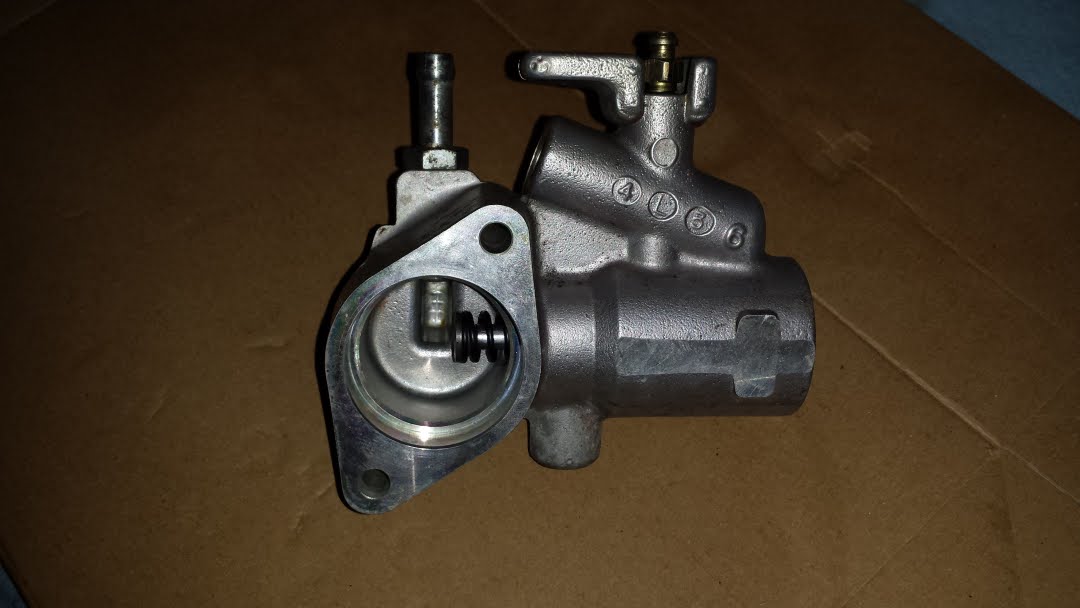
This is the pump opening where the electrical motor with the eccentric bearing pushes the plunger pump.
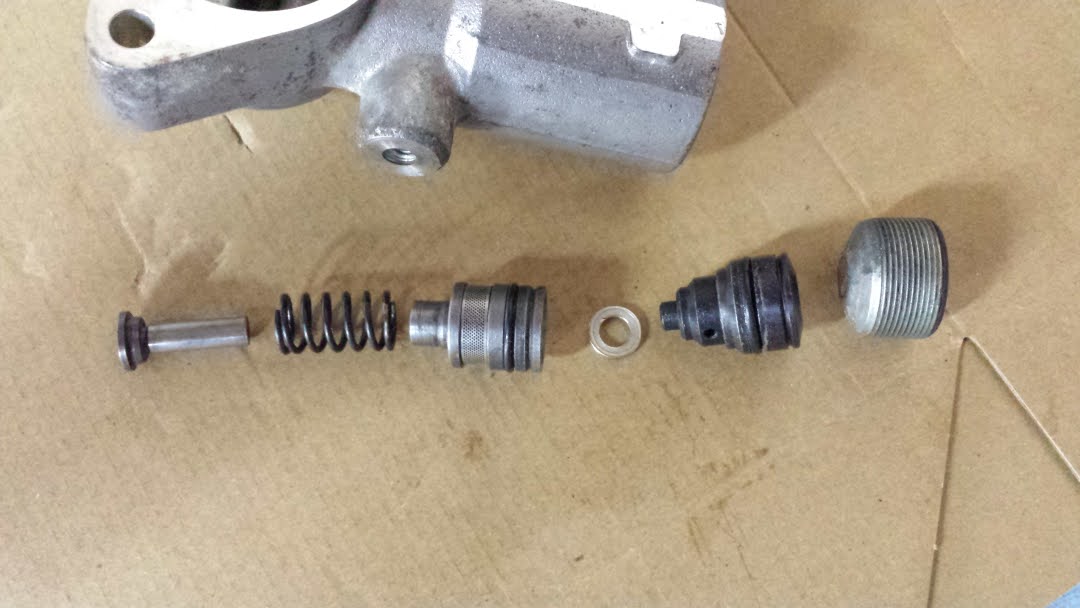
The components from left to right.
The plunger, spring, plunger pump housing with meshed filter, check-valve and the dead bolt.
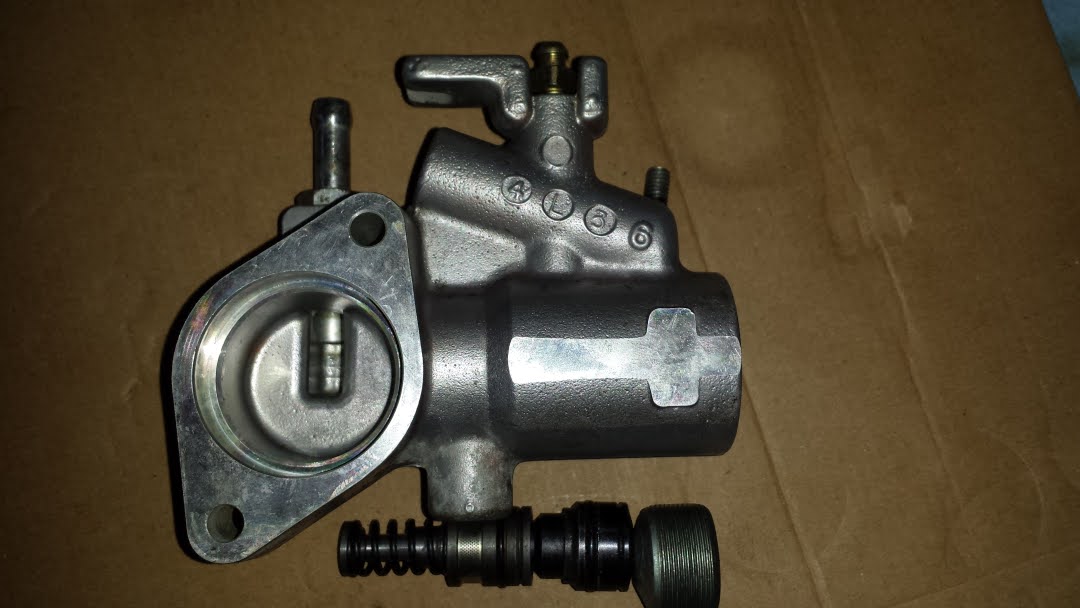
Parts alignment inside against the fluid passage.
On several pump, seen the plunger surface got rusty and stuck inside the plunger housing with the spring compressed so no pump action initiated and thus, no pressure built up.
Kaz
Is this still available?I know you are looking just for accumulator, but I have this freshly removed
Brakes - 1993 Complete ABS unit
1993 Complete ABS unit Upgraded to a 00+ model. 182k mileage when removed. ABS worked well and the only time the unit would make noise would be after long periods without being driven, which would disappear after first brake cycle. Included are the original abs computer and the brake lines if...www.nsxprime.com
Willing to negotiate slightly
